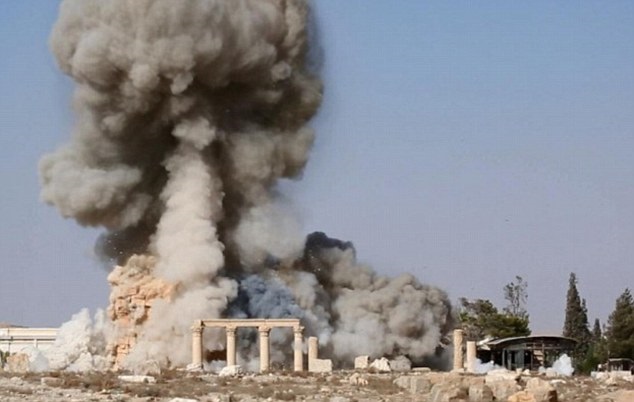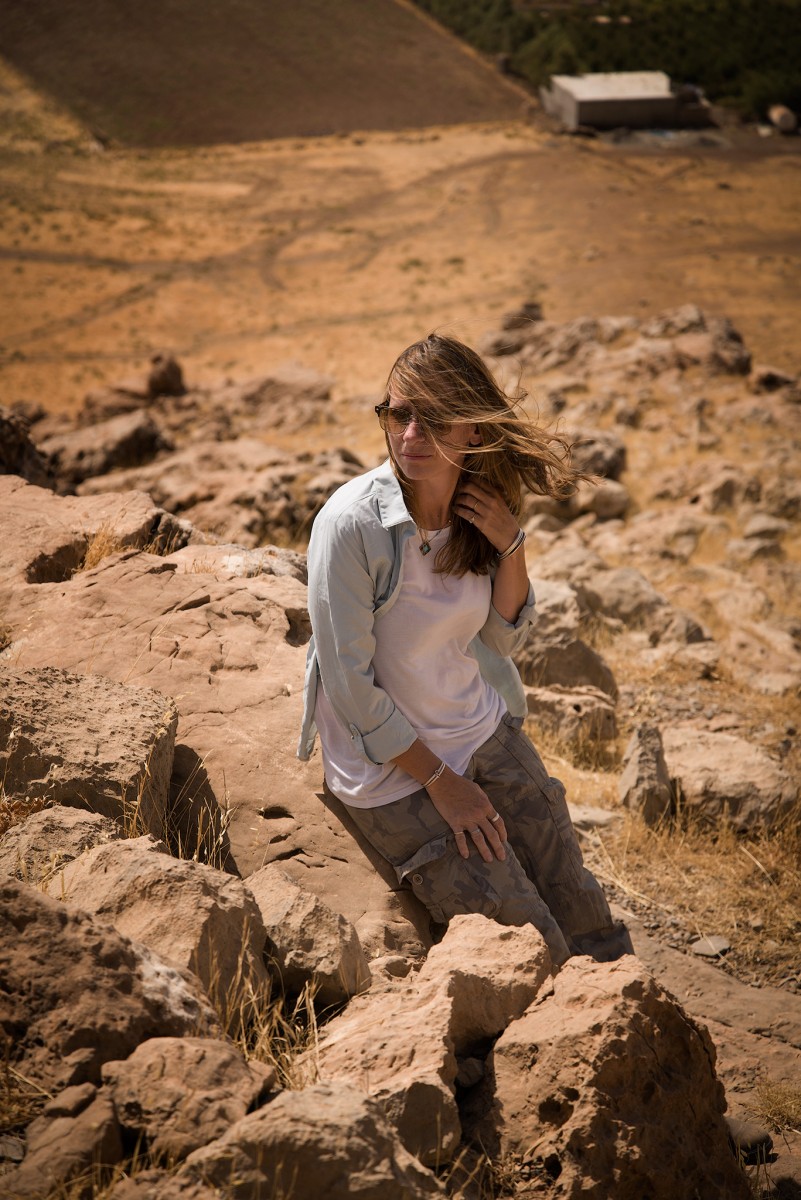
A temple in the ancient city of Palmyra, Syria, was destroyed by ISIS. "They believe that ancient artefacts and religious sites are idolatrous, and want to eliminate the cultural heritage in these areas," a U of M professor said at a recent lecture.
Destroying antiquities, explaining ISIS
Tina Greenfield is a modern-day Indiana Jones. She’s passionate about preserving historical artefacts and teaching about our heritage, so travelling to war-torn regions of the world is an ordinary workday for her.
“What we’re doing is incredibly important,” says Greenfield, slight of stature but visibly strong in character, bold and exuberant. “We are making sure that World Heritage Sites are protected, even if only in some cases documented for future generations.”
Greenfield, who is with the Near Eastern Biblical Archaeology Laboratory at the University of Manitoba, spoke recently in St. Paul’s College as part of its lunchtime Conversations Series, describing her archaeological digs in the Middle East where the Islamic State (IS or ISIL or ISIS) is intentionally destroying antiquities in support of its fundamentalist religious views. Her work involves saving the cultural heritage of Iraq and Syria.
“When I was in the Iraqi city of Erbil in 2014, it was just before the nearby city of Mosul was overrun by ISIS,” she notes rather casually. “I was working with my team only about 30 kilometres away from where ISIS was attacking.”
That’s about the width of the city of Winnipeg, between Transcona and Headingley.
Mainstream news has carried images and video of ISIS destroying ancient temples and archaeological sites, but Greenfield says these acts are not that unusual in themselves.
“Such destruction is nothing special,” she says. “This is actually quite common during war. The difference is that ISIS is very good at publicizing their destruction and are able to manipulate propaganda effectively.”
Greenfield says ISIS is not just blowing up temples and mosques with bombs, but then going in afterward to jackhammer larger pieces to pebbles, and promote their work on YouTube.
She explains: “They believe that ancient artefacts and religious sites are idolatrous, and want to eliminate the cultural heritage in these areas. Without visible heritage, young people living there are more willing to accept ISIS’ beliefs.”
She argues that we all should care about what is happening because the areas targeted by ISIS are the “cradle of civilization,” often more than 5,000 years old, where literature, social structure and sciences were first developed.
“Destroying everything from cuneiform tablets inscribed with poetry to huge monoliths that have stood for centuries has a massive impact on the historical record,” she says.
Greenfield has worked on archaeological sites from the Assyrian Empire and studied material from the ancient city of Ninevah, built about 700 BC and now believed to be the original site of the “Hanging Gardens of Babylon.” Nearby, in Nimrud, a palace was destroyed by ISIS in 2015. It’s where an archaeologist named Max Malloran did extensive work with his better-known wife, Agatha Christie.
One of the most serious consequences of ISIS’ rampage is its looting of historical sites, often done in conjunction with destruction. She estimates that ISIS may have been making as much as $2 million per day about five years ago through sales of artefacts looted from ancient sites, and the figure is much higher now.
This raises an important and difficult ethical problem among archaeologists.
“Should museums purchase knowingly looted artefacts in order to preserve them?” she asks. “If they don’t purchase them, such items could be lost or further destroyed.”
Greenfield has worked with the U.S. State Department and now the British Museum on projects to document and preserve ancient sites in Kurdistan and Iraq. Her team is using 3D imaging and satellite imaging to excavate and record sites and artefacts in minute details so that they can be preserved for future generations. One of her sites, the Erbil Citadel is a city that had been continuously inhabited since Neolithic times.
And it, too, is close to the ISIS offensive.
Greenfield says, “The good news is that international teams of archaeologists are coming together to train local archaeologists and workers in ways to document and preserve historical sites. Even in Syria, there is a great deal of damage already done, and it’s very difficult to do this kind of work. But we’re doing it.”
Research at the University of Manitoba is partially supported by funding from the Government of Canada Research Support Fund.








Excellent article re:reasons for preservation of ancient monuments, art etc in Middle East—-this info should be put into our daily Canadian papers, so our public is made aware of details about our battle with ISIS